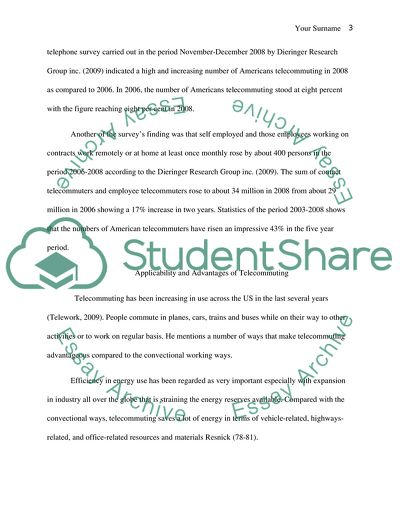Applicability and Advantages of Telecommuting Case Study. https://studentshare.org/marketing/1730276-is-telecommuting-working
Applicability and Advantages of Telecommuting Case Study. https://studentshare.org/marketing/1730276-is-telecommuting-working.


